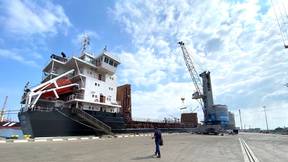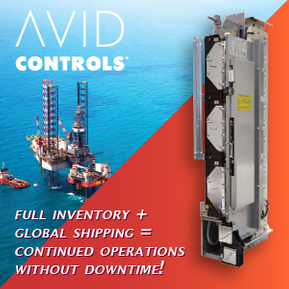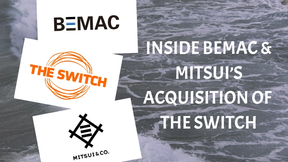Maritime Propulsion: The NSMV Power Play
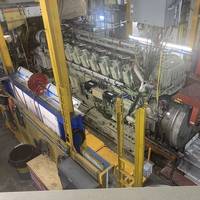
The quest to build a series of five National Security Multi-Mission Vessels (NSMVs), which will serve as training ships for five U.S. maritime academies, has drawn a broad cadre of suppliers. The powerplant was a main focus, helping to evolve the schools from steam power plants to a modern propulsion package.NSMVs being built for the maritime academies is widely lauded as a ‘win’ for U.S. shipbuilding, an example of commercial shipbuilding practices applied to a government shipbuilding project.
Interview: Johan Inden, Volvo Penta

Johan Inden heads Volvo Penta’s global marine business unit as part of the company’s executive management team. “I have global strategy responsibility, global product responsibility, direct commercial responsibility for everything except North America; we have our own commercial setup with our local president there, Fredrik Högberg. Of course, we collaborate very closely, but we have in our DNA to be very close to customers, so we think we need a dedicated commercial organization in North America as well…
Interview: Joe Hudspeth, BAE Systems

Joe Hudspeth is the Director of Business Development for Global Marine at BAE Systems in Endicott, N.Y. BAE Systems offers complete, efficient propulsion and auxiliary power systems utilizing electric technology. Hudspeth has been involved with maritime sales, marketing and product development since 2000. He currently serves as a regional co-chairman for the Passenger Vessel Association, is a judge for the Worldwide Ferry Safety Association student design competition, and frequently speaks and writes on maritime and ferry related issues. Hudspeth lives in Bellingham, Wash.
EPA Tier 4: Difficult and Contentious, 12 Years and Counting
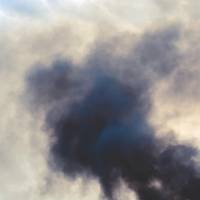
When it comes to complying with EPA’s Tier 4 emissions regulations, there’s no shortage of creativity emerging from America’s maritime engineering firms. Companies such as Hug Engineering are offering flexible, customized aftertreatment-based control systems that can assemble almost in modular like fashion. Other companies, such as ABB Group, offer battery-hybrid power sources to complement combustion power and avoid threshold diesel emissions. Engine manufacturers, such as Cummins…
Interview: Dirk Balthasar, President, Thermamax

To start, can you give an overview of the Thermamax offering to the maritime industry?Thermamax is a specialist in the design and manufacture of thermal and acoustic insulation solutions for diesel engines, spark ignited engines, exhaust aftertreatment systems and electric storage systems. Our markets include automotive, on- and off-highway sectors, power sports vehicles, stationary power generation, ships, and oil platforms, both on land and at sea. For the marine industry, Thermamax is a solution provider for SOLAS-compliant insulation solutions for engine rooms.
NGOs Call Upon EU to Effectively Regulate Shipping Pollution
From dangerous emissions in ports to hazardous scrapping on South Asian beaches, European shipping companies pollute and put people’s health and lives at serious risk. In light of the ongoing European Shipping Week and the failure of the International Maritime Organisation to find solutions, environmental experts are ringing the alarm bell and calling upon European policy makers to urgently adopt policies that effectively target the environmental performance of shipping. “Every year approximately 50,000 people in the EU die prematurely because of air pollution from ships. While all land-based sources have been gradually regulated in recent years we still face a lack of effective emissions control measures for ships,” says Daniel Rieger from NABU.
HEINZMANN leads in dual-fuel retrofit of marine propulsion engine
The use of LNG in marine applications is becoming increasingly common. It offers a big potential in terms of operating costs and emission reduction. Diesel engines converted to dual-fuel show considerably reduced emissions in case of high conversion ratios. Depending on the emission standard which is required, expensive and unwieldy exhaust aftertreatment systems can become unnecessary or their implementation costs are significantly lower. The engine performance is comparable to gas engines. HEINZMANN, a specialist in engine and turbine management solutions, offers dual-fuel retrofit systems for a wide range of diesel engines to be converted to gas operation and at the same time providing all the safety features required for marine applications.
Cummins Darlington: 50 Years of Engine Production
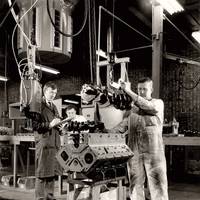
UK-based Cummins Darlington is celebrating its 50th anniversary during 2015. Since opening, around 1.5 million engines have been built in the factory for customers worldwide, providing power for vessels as well as land vehicles. Work began in 1963 on the £8.5 million plant with engine production commencing in 1965, having more than 400 employees’ onsite. The production line assembled Cummins range of Small Vee V6 and V8 engines, named VAL and VALE. With cubic capacities of 5.7 and 8.3 liters, they had a capability of up to 111 kW, suitable for a range of boats at the time.
Emissions Control Takes Center Stage for Workboat Engines
Today’s workboat operators must navigate increasingly stringent IMO and EPA environmental and emissions regulations in and around ports and rivers. As the drama unfolds, selective catalytic reduction or SCR is emerging as a viable vehicle to do just that. At the same time, fears about space constraints for smaller vessels and the hassle of carrying and handing urea for these systems are rapidly evaporating, as well. Two different firms – both familiar names in propulsion markets – have embraced SCR as the way forward. Both, Tenneco and Volvo Penta, rely on deep roots in these markets and significant experience in the effort to reduce emissions from engines.
Rolls-Royce Bolsters R&D for MTU Engines
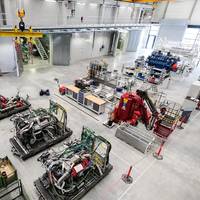
Rolls-Royce Power Systems informs it is investing in the development of the next generation of ecological sound and cost efficient combustion engines at MTU, a brand in the Rolls-Royce Land & Sea division. With the first new test stands entering service today in Friedrichshafen, MTU’s lead site and main R&D location, Rolls-Royce said it has invested some 40 million euros in the new testing facilities at MTU. "This move is making space for new developments in every sense of the word.
MTU Shows SMM it's Ready for IMO Tier lll
The Rolls-Royce brand MTU is showing its concepts at the current SMM, Hamburg, in response to the IMO Tier III emission standard which is due to come into force in 2016. “MTU is well-prepared for IMO Tier III, be it with SCR exhaust aftertreatment systems for diesel engines or with gas engines,” explains Dr. Michael Haidinger, Chief Sales Officer at Rolls-Royce Power Systems. In an animated presentation, MTU is demonstrating the latest high-speed Series 4000 gas engine based on its trusted 4000 M63 diesel engine which is widely used in working vessels. The first field-trial engine is scheduled to go into service in 2016 in a new environmentally-compatible tugboat. MTU's natural-gas marine engine is due to be launched on the market in 2018.
New Cummins Tier 4 Diesel Engines Hit the Market
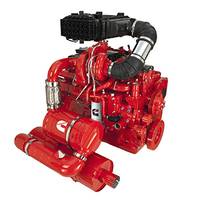
Cummins Power Generation launched two new diesel G-drive engines from 240-433 horsepower that are certified to meet EPA Tier 4 Final emissions regulations for nitrogen oxides (NOx) and particulate matter (PM or soot) without the use of a Diesel Particulate Filter (DPF). Instead, the new engines employ a combination of in-cylinder combustion improvements, exhaust gas recirculation (EGR) and selective catalytic reduction (SCR) exhaust aftertreatment. These new engines are suitable for powering generators from 150-300kVA.
MTU Boosts Series 8000 Engine Power
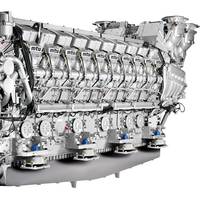
Series 8000 marine diesel engines from Tognum subsidiary MTU Friedrichshafen GmbH now available with an output of 10MW. Previously, the 20-cylinder engine had a maximum output of 9,100kW. The IMO Tier II-compliant unit demonstrated its increased power and reliability during a project-specific endurance run over 1,500 hours under tropical conditions. The Series 8000 engines now cover a power range from 7,200kW to 10,000kW enabling MTU to offer economically efficient, diesel-based propulsion solutions producing up to 40MW per vessel.
Caterpillar's New Line of Gas-Fuel Generator Sets
Caterpillar Inc. Available in both 50 Hz- and 60 Hz-rated models, CG generator sets are designed for maximum efficiency in extended-duty distributed generation and cogeneration (combined heat-and-power) applications. Built for flexibility, CG generator sets can operate on gases of varying quality, including natural gas; biogases such as landfill, digester and sewage gas; coke gas; and coal mine methane. The new generator sets can be used in a variety applications, including industrial and commercial facilities, utilities, wastewater treatment plants, landfills, mines, greenhouses and farms. “At a time when energy efficiency and sustainability are on everyone’s minds…
ClassNK: Guidelines for SCR and Reductant Agent Supply Systems
ClassNK has announced the release of its new Guideline for SCR (Selective Catalytic Reduction) Systems and Reductant Agent Supply Systems. The new guidelines address the strengthening of nitrogen oxide (NOx) emission regulations as stipulated in amendments to Annex VI of the International Convention for the Prevention of Pollution from Ships 1973 (MARPOL) which entered into force on 1 July 2010. With these amendments to MARPOL requiring 80% reductions in NOx emissions from diesel engines from 2016, a number of new technologies and alternative fuels are currently being investigated for their emission reduction potential. As SCR systems already have a proven track record in Europe as aftertreatment systems…
Cummins Introduces QSK95 Marine Engine
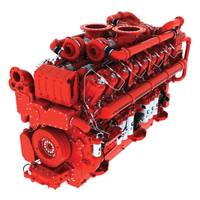
Designed Ready to Meet EPA Low-Emissions in 2014. Most Powerful High-Speed Diesel Will Challenge Medium-Speed Engines. Cummins Inc., a manufacturer of diesel engines for the commercial marine industry, will introduce the new QSK95 engine with 4000 hp (2983 kW) output as the most powerful high-speed diesel configured for marine propulsion and auxiliary generator sets. The 95-liter, 16-cylinder engine, revealed today at the Seymour Engine Plant, is designed ready to meet EPA Tier 4 low-emissions regulations taking effect in 2014.


